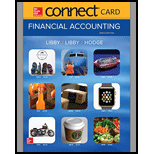
How is the
Discuss the manner in which the current ratio is computed and interpreted.
Explanation of Solution
Current ratio:
Current ratio is one type of liquidity ratios, it link between current assets and current liabilities. Thumb rule for current ratio is 2:1. The current assets are cash, marketable securities, accounts receivable, merchandise inventory prepaid expenses and so on. Current liabilities are accounts payable, short term notes payable, short term bonds and so on.
Current ratio is computed by dividing total current assets by total current liabilities. It calculates the capacity of the company to pay its short-term obligations with current assets. The current ratio is more than 1:1 the company has sufficient current assets to pay short-term obligations. The current ratio is less than 1:1; the company has not sufficient current assets to pay its short-term obligations. The current ratio is more than 2:1; it indicates the company having an excess amount of current assets after paying the short-term obligations.
Want to see more full solutions like this?
Chapter 2 Solutions
Connect Access Card for Financial Accounting
- What is the cost formula for utilities?arrow_forwardFranklin Auto Works uses a job order cost system. Overhead is applied to jobs on the basis of direct labor hours. During the current period, Job No. 412 was charged $520 in direct materials, $560 in direct labor, and $225 in overhead. If direct labor costs an average of $18 per hour, what is the company's overhead application rate? Need helparrow_forwardHello tutor solve this question accountingarrow_forward
- managerial accountingarrow_forwardAnswer this Accounting Questionarrow_forwardFranklin Auto Works uses a job order cost system. Overhead is applied to jobs on the basis of direct labor hours. During the current period, Job No. 412 was charged $520 in direct materials, $560 in direct labor, and $225 in overhead. If direct labor costs an average of $18 per hour, what is the company's overhead application rate?arrow_forward
- General accounting questionarrow_forwardA $2,000 bond issued in 2018 pays $180 in interest each year. What is the current yield on the bond if it can be purchased for $1,500? I Want Answerarrow_forwardA company sells goods at a mark-up of 50% on cost. Sales revenue is $300,000. What is the cost of sales?arrow_forward
 Cornerstones of Financial AccountingAccountingISBN:9781337690881Author:Jay Rich, Jeff JonesPublisher:Cengage LearningPrinciples of Accounting Volume 1AccountingISBN:9781947172685Author:OpenStaxPublisher:OpenStax College
Cornerstones of Financial AccountingAccountingISBN:9781337690881Author:Jay Rich, Jeff JonesPublisher:Cengage LearningPrinciples of Accounting Volume 1AccountingISBN:9781947172685Author:OpenStaxPublisher:OpenStax College Managerial Accounting: The Cornerstone of Busines...AccountingISBN:9781337115773Author:Maryanne M. Mowen, Don R. Hansen, Dan L. HeitgerPublisher:Cengage Learning
Managerial Accounting: The Cornerstone of Busines...AccountingISBN:9781337115773Author:Maryanne M. Mowen, Don R. Hansen, Dan L. HeitgerPublisher:Cengage Learning



